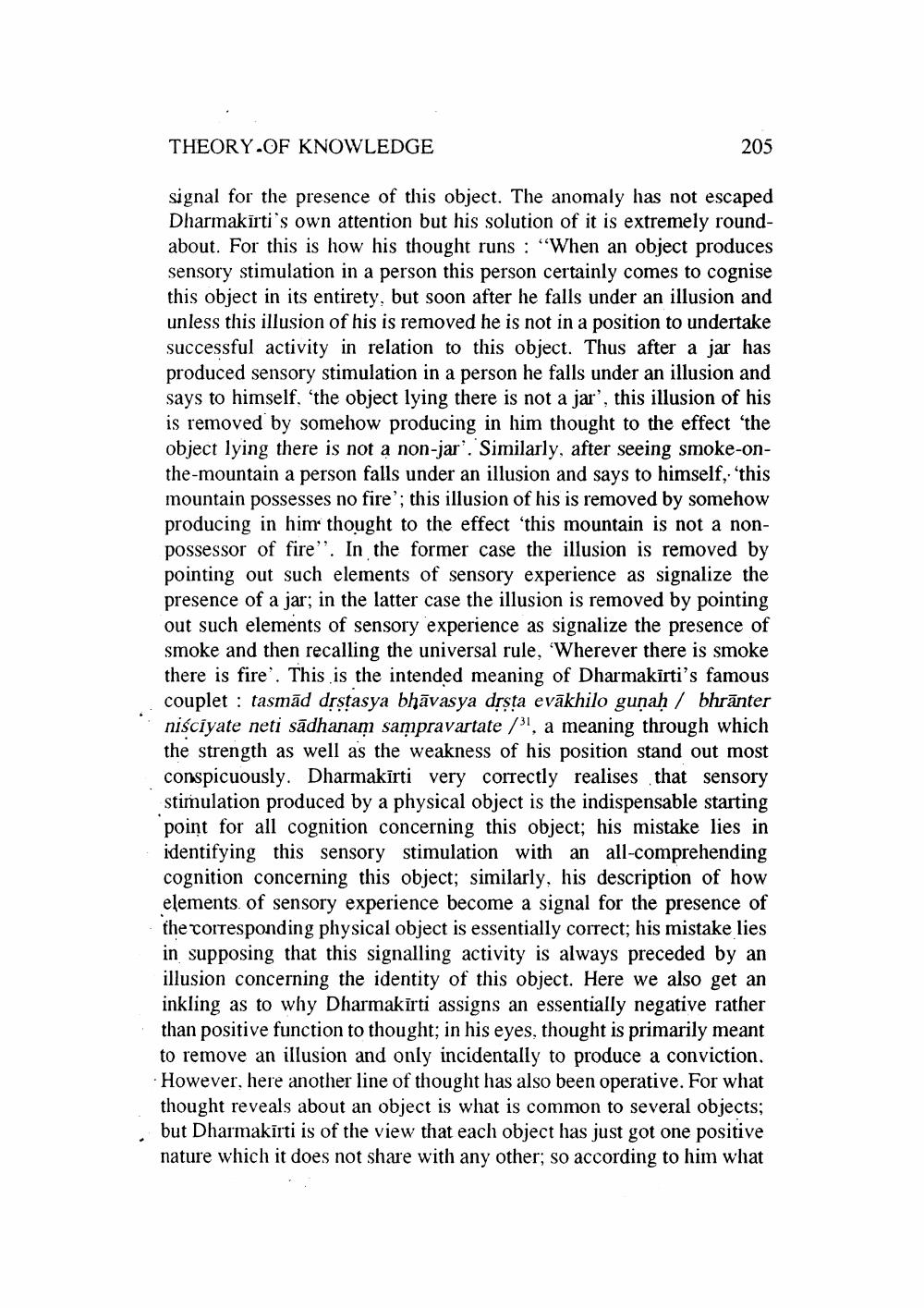________________
THEORY.OF KNOWLEDGE
205
signal for the presence of this object. The anomaly has not escaped Dharmakīrti's own attention but his solution of it is extremely roundabout. For this is how his thought runs : "When an object produces sensory stimulation in a person this person certainly comes to cognise this object in its entirety, but soon after he falls under an illusion and unless this illusion of his is removed he is not in a position to undertake successful activity in relation to this object. Thus after a jar has produced sensory stimulation in a person he falls under an illusion and says to himself, 'the object lying there is not a jar', this illusion of his is removed by somehow producing in him thought to the effect the object lying there is not a non-jar. Similarly, after seeing smoke-onthe-mountain a person falls under an illusion and says to himself, 'this mountain possesses no fire'; this illusion of his is removed by somehow producing in him thought to the effect 'this mountain is not a nonpossessor of fire". In the former case the illusion is removed by pointing out such elements of sensory experience as signalize the presence of a jar; in the latter case the illusion is removed by pointing out such elements of sensory experience as signalize the presence of smoke and then recalling the universal rule, 'Wherever there is smoke there is fire'. This is the intended meaning of Dharmakīrti's famous couplet : tasmād drstasya bhāvasya drsta evākhilo gunaḥ / bhrānter niściyate neti sādhanam sampravartate/l, a meaning through which the strength as well as the weakness of his position stand out most conspicuously. Dharmakirti very correctly realises that sensory stimulation produced by a physical object is the indispensable starting point for all cognition concerning this object; his mistake lies in identifying this sensory stimulation with an all-comprehending cognition concerning this object; similarly, his description of how elements of sensory experience become a signal for the presence of the corresponding physical object is essentially correct; his mistake lies in supposing that this signalling activity is always preceded by an illusion concerning the identity of this object. Here we also get an inkling as to why Dharmakīrti assigns an essentially negative rather than positive function to thought; in his eyes, thought is primarily meant to remove an illusion and only incidentally to produce a conviction. However, here another line of thought has also been operative. For what thought reveals about an object is what is common to several objects; but Dharmakirti is of the view that each object has just got one positive nature which it does not share with any other; so according to him what




